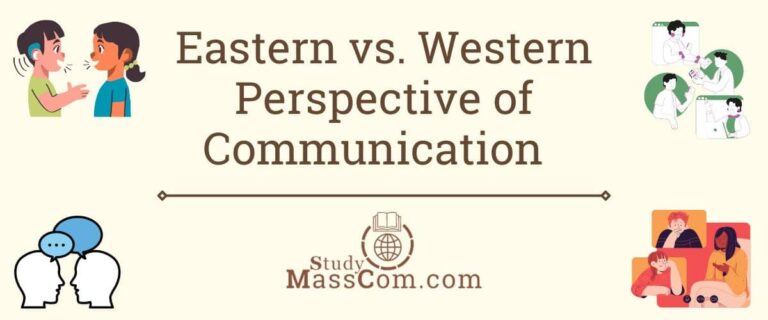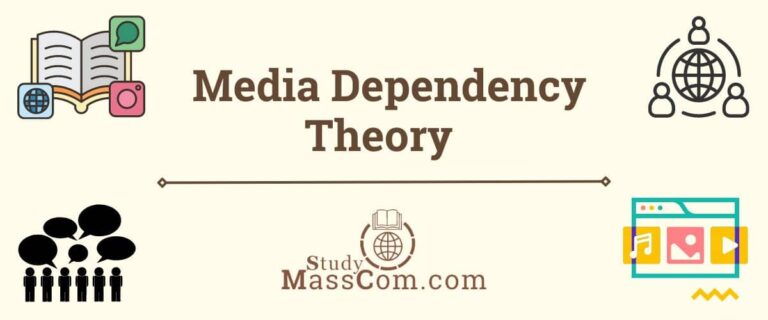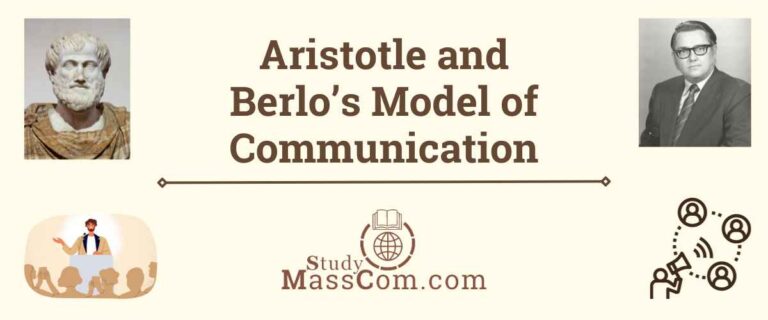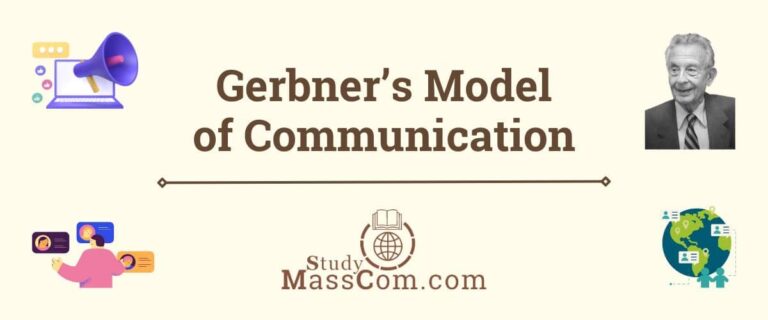Shannon-Weaver & Schramm’s Model of Communication: Similarities & Differences
Comparing Claude Shannon and Warren Weaver’s mathematical model of communication with Wilbur Schramm’s humanistic model provides valuable insights into the evolution of communication theory and highlights different approaches to understanding the communication process. While both models aim to conceptualize communication, they do so from distinct perspectives, emphasizing either the technical aspects of information transmission or the socio-psychological elements of human interaction. This article will explore the similarities and differences between Shannon-Weaver’s information theory model and Schramm’s humanistic model of communication, focusing on their theoretical frameworks, key components, and implications for understanding communication dynamics.

Shannon-Weaver’s Information Theory Model of Communication
Here’s an overview of the Shannon-Weaver model of communication with particular emphasis on its theoretical framework, key components, and implications.
Theoretical Framework
Mathematical Approach: Shannon and Weaver’s model, developed in the late 1940s, is rooted in a mathematical and engineering perspective. It was primarily concerned with how information is transmitted over a noisy channel and how to optimize this transmission process.
Source-Encoder-Channel-Decoder-Receiver (SECDR) Model: The communication process is conceptualized as a linear sequence of components: a source generates a message, which is encoded into signals, transmitted through a channel, decoded back into a message, and finally received by a destination.
Key Components
1. Information Source: The originator of the message.
2. Transmitter: Converts the message into signals suitable for transmission.
3. Channel: The medium through which signals are transmitted.
4. Noise: Any interference that disrupts the signal during transmission.
5. Receiver: Reconstructs the message from the received signals.
6. Destination: The intended recipient of the message.
Implications
Efficiency and Reliability: Shannon-Weaver’s model emphasizes the importance of maximizing the efficiency and reliability of information transmission by minimizing noise and optimizing encoding and decoding processes.
Technological Focus: This model has been influential in shaping communication engineering and information theory, laying the groundwork for modern telecommunication systems and digital communication technologies.
Limited Emphasis on Context: While providing valuable insights into technical aspects of communication, the model tends to overlook the socio-psychological dimensions of human interaction and the contextual factors that influence communication dynamics.
Learn about the key differences between the Shannon-Weaver Model and the Transaction Model.
Schramm’s Model of Communication
Here’s an outline of Schramm’s model of communication.
Theoretical Framework
Interpersonal Perspective: Schramm’s model, proposed in the 1950s and 1960s, reflects a more humanistic and interpersonal approach to communication. It focuses on the interaction between individuals and the social context in which communication occurs.
Field of Experience: Schramm emphasizes the role of the receiver’s field of experience, which includes their attitudes, beliefs, and cultural background, in interpreting and responding to messages.
Key Components
1. Source-Message-Channel-Receiver (SMCR) Model: Similar to Shannon-Weaver’s model, but with a greater emphasis on the interaction between sender and receiver and the message itself.
2. Encoding and Decoding: Schramm highlights the active role of both sender and receiver in encoding and decoding messages, emphasizing that communication is a dynamic and interactive process influenced by context and individual interpretation.
3. Feedback: Schramm emphasizes the importance of feedback in the communication process, highlighting its role in facilitating mutual understanding and adjusting message delivery based on receiver response.
4. Field of Experience: The receiver’s unique background and experiences shape their interpretation of messages, influencing how they respond and engage with the communication process.
Implications
Emphasis on Context and Interaction: Schramm’s model acknowledges the significance of context, individual differences, and interpersonal dynamics in communication, providing a more holistic understanding of the communication process.
Psychological and Social Considerations: By emphasizing the role of the receiver’s field of experience and the interactive nature of communication, Schramm’s model addresses psychological and social dimensions often overlooked in purely technical models like Shannon-Weaver’s.
Applicability to Human Communication: This model has been influential in fields such as interpersonal communication, psychology, and media studies, providing a framework for understanding how communication shapes relationships, attitudes, and behaviors.
Read about the differences between Traditional Media and New Media.
Similarities Between the Shannon-Weaver Model and Schramm’s Model of Communication
While Claude Shannon and Warren Weaver’s information theory model and Wilbur Schramm’s humanistic model of communication differ in their theoretical frameworks and emphases, they also share several similarities in their conceptualization of the communication process. Here are some key similarities between the two models:
Source-Message-Channel-Receiver Framework
Both models utilize a similar basic framework for conceptualizing the communication process. They both recognize the existence of a source (or sender) who generates a message, a channel through which the message is transmitted, and a receiver who ultimately interprets the message. This shared framework highlights the common understanding of communication as a process involving the exchange of information between at least two parties.
Focus on Message Encoding and Decoding
Both models acknowledge the importance of encoding and decoding in the communication process. Shannon-Weaver’s model emphasizes the encoding of a message into signals suitable for transmission through a channel and its subsequent decoding by the receiver. Similarly, Schramm’s model recognizes the active role of both sender and receiver in encoding and decoding messages, highlighting the interactive nature of communication.
Recognition of Noise and Interference
Both models recognize the presence of noise or interference in the communication process. Shannon-Weaver’s model emphasizes the impact of noise on the transmission of signals through a channel, which can distort or disrupt the intended message. Schramm’s model also acknowledges the potential for noise or interference to affect the interpretation of messages by the receiver, highlighting the importance of considering contextual factors that may influence communication.
Importance of Feedback
Both models recognize the significance of feedback in the communication process. Shannon-Weaver’s model acknowledges the importance of feedback in assessing the effectiveness of communication and improving the accuracy of message transmission. Similarly, Schramm’s model emphasizes the role of feedback in facilitating mutual understanding between sender and receiver and adjusting message delivery based on receiver response.
Recognition of Contextual Factors
While Shannon-Weaver’s model tends to abstract away from contextual factors, both models recognize the influence of context on the communication process. Schramm’s model explicitly emphasizes the role of the receiver’s field of experience, including their attitudes, beliefs, and cultural background, in interpreting and responding to messages. This recognition of contextual factors underscores the importance of considering the socio-psychological dimensions of communication.
In summary, while Shannon-Weaver’s information theory model and Schramm’s humanistic model of communication differ in their theoretical orientations and emphases, they also share several key similarities in their conceptualization of the communication process. Both models highlight the importance of message encoding and decoding, the presence of noise and interference, the significance of feedback, and the influence of contextual factors on communication dynamics. These shared elements contribute to a broader understanding of communication as a complex and multifaceted process involving the exchange of information between individuals or groups.
Explore the similarities and differences between Two-Step Flow Theory and Multi-Step Flow Theory.
Shannon-Weaver Model vs. Schramm’s Model of Communication: Key Differences
The Shannon-Weaver model of communication and Schramm’s model of communication, while sharing some commonalities, also exhibit significant differences in their theoretical frameworks, emphases, and implications for understanding the communication process. Here are the key differences between the two models:
Theoretical Orientation
Rooted in information theory and engineering, Shannon-Weaver’s model focuses on the technical aspects of information transmission, such as signal encoding, channel capacity, and noise reduction. It approaches communication as a process of efficiently transmitting information from a sender to a receiver through a noisy channel.
Schramm’s model adopts a more humanistic and interpersonal perspective, emphasizing the role of context, individual interpretation, and social dynamics in communication. It highlights the interactive nature of communication and the importance of feedback, emphasizing the active role of both sender and receiver in encoding, decoding, and interpreting messages.
Linear vs. Interactive
The Shannon-Weaver model presents communication as a linear process of information transmission, where the sender encodes a message into signals, transmits them through a channel, and the receiver decodes the signals to reconstruct the message. It emphasizes the one-way flow of information from sender to receiver.
In contrast, Schramm’s model recognizes the interactive nature of communication, highlighting the active role of both sender and receiver in encoding, decoding, and interpreting messages. It emphasizes the importance of feedback and the mutual exchange of information between sender and receiver, suggesting a more dynamic and reciprocal communication process.
Technological vs. Human-Centric
The Shannon-Weaver model is well-suited for understanding technological communication systems and has been influential in shaping communication engineering and technology. It focuses on optimizing information transmission processes in telecommunication systems and digital communication technologies.
Schramm’s model is more focused on human communication in social and interpersonal contexts. It provides a framework for understanding how communication shapes relationships, attitudes, and behaviors, emphasizing the psychological and social dimensions of communication.
Emphasis on Feedback
While the Shannon-Weaver model acknowledges the importance of feedback in assessing the effectiveness of communication and improving the accuracy of message transmission, it does not emphasize feedback as prominently as Schramm’s model.
Schramm’s model highlights the role of feedback in facilitating mutual understanding between sender and receiver and adjusting message delivery based on the receiver’s response. It emphasizes the importance of reciprocal communication and interaction between sender and receiver in achieving effective communication.
Contextual Considerations and Individual Interpretation
While Shannon-Weaver’s model acknowledges the presence of noise in the communication process, it tends to abstract away from contextual factors and individual interpretation, focusing primarily on technical aspects such as signal transmission and noise reduction.
Schramm’s model places greater emphasis on the role of context, individual differences, and social dynamics in communication. It highlights the receiver’s field of experience, including their attitudes, beliefs, and cultural background, in interpreting and responding to messages. This emphasis on context and individual interpretation provides a more holistic understanding of communication dynamics.
Read about the differences between Cultivation Theory and Agenda-Setting Theory.
Conclusion
In summary, Claude Shannon and Warren Weaver’s information theory model and Wilbur Schramm’s humanistic model of communication offer distinct perspectives on the communication process. While Shannon-Weaver’s model provides valuable insights into the technical aspects of information transmission and has been instrumental in shaping communication engineering and technology, Schramm’s model offers a more holistic understanding of communication by emphasizing the interpersonal dynamics, contextual factors, and individual interpretation involved in human interaction. Both models have contributed significantly to communication theory and practice, albeit from different theoretical orientations, highlighting the multifaceted nature of communication as both a technical process and a complex social phenomenon.
FAQs
The key difference between the Shannon-Weaver model and Schramm’s model lies in their theoretical orientations and emphases. The Shannon-Weaver model is rooted in information theory and engineering, focusing on the technical aspects of information transmission, while Schramm’s model adopts a more humanistic and interpersonal perspective, emphasizing the role of context, individual interpretation, and social dynamics in communication. While both models recognize the importance of message transmission and reception, they differ in their approaches to understanding the communication process, with Shannon-Weaver focusing on technical efficiency and reliability, and Schramm emphasizing the interactive and contextual nature of communication.
The Shannon-Weaver model and Schramm’s model share several similarities in their conceptualization of the communication process. Both models utilize a similar basic framework involving a source (sender), message, channel, and receiver. They both recognize the importance of encoding and decoding messages in the communication process and acknowledge the presence of noise or interference. Additionally, both models emphasize the significance of feedback in facilitating mutual understanding between sender and receiver. Despite differences in their theoretical orientations, these shared elements contribute to a common understanding of communication as a dynamic process involving the exchange of information between individuals or groups.






